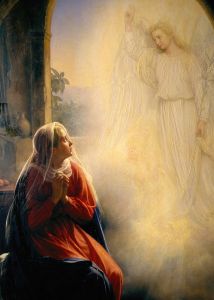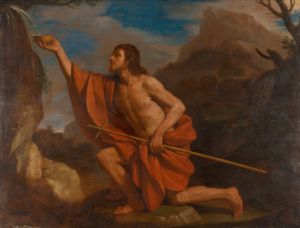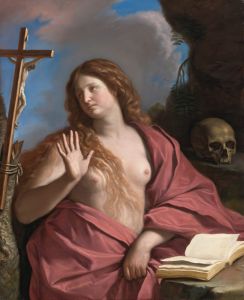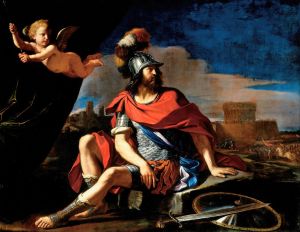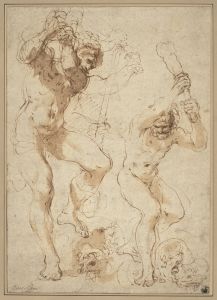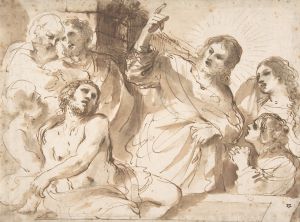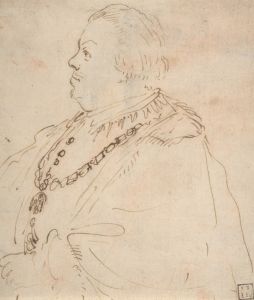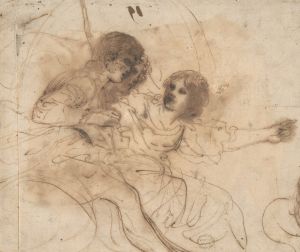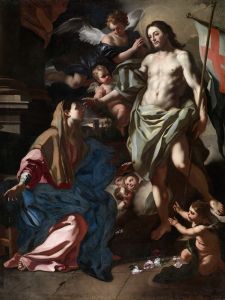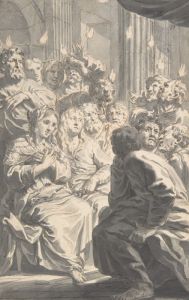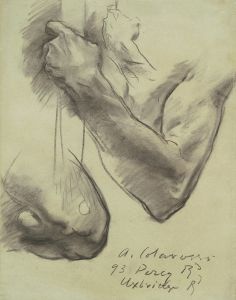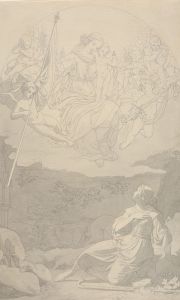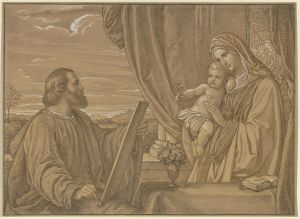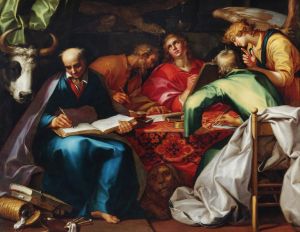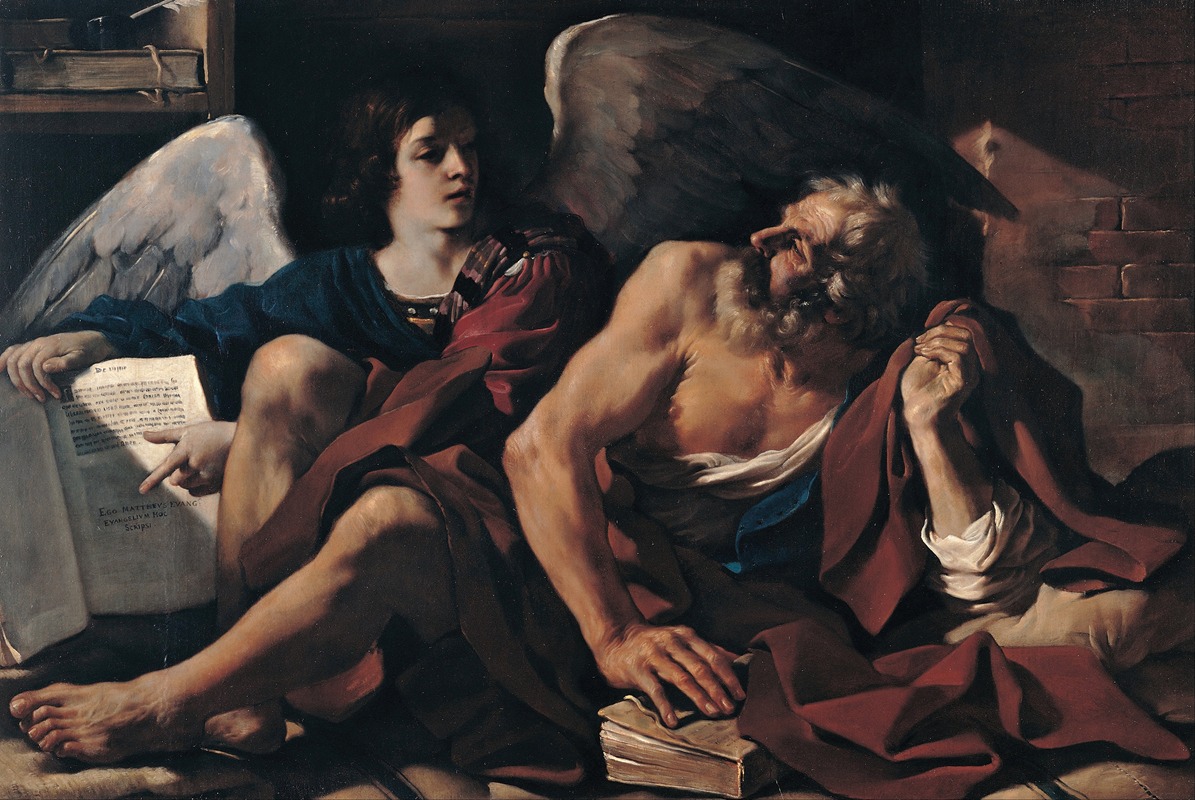
Saint Matthew and the Angel
A hand-painted replica of Guercino’s masterpiece Saint Matthew and the Angel, meticulously crafted by professional artists to capture the true essence of the original. Each piece is created with museum-quality canvas and rare mineral pigments, carefully painted by experienced artists with delicate brushstrokes and rich, layered colors to perfectly recreate the texture of the original artwork. Unlike machine-printed reproductions, this hand-painted version brings the painting to life, infused with the artist’s emotions and skill in every stroke. Whether for personal collection or home decoration, it instantly elevates the artistic atmosphere of any space.
"Saint Matthew and the Angel" is a renowned painting by the Italian Baroque artist Giovanni Francesco Barbieri, better known as Guercino. Created in 1622, this artwork exemplifies the dynamic style and emotional intensity characteristic of the Baroque period. Guercino, whose nickname means "the squinter" due to an eye defect, was a prolific artist known for his dramatic use of light and shadow, as well as his ability to convey deep emotion through his compositions.
The painting depicts Saint Matthew, one of the twelve apostles of Jesus and the author of the Gospel of Matthew, in a moment of divine inspiration. He is shown seated, with an angel by his side guiding his hand as he writes. This imagery is a common representation of the evangelists, symbolizing the divine inspiration believed to guide their writings. The angel, often seen as a messenger of God, is depicted whispering into Matthew's ear, reinforcing the idea of divine communication.
Guercino's use of chiaroscuro, a technique involving the contrast of light and dark, is evident in this painting. The light appears to emanate from the angel, illuminating Matthew's face and the pages before him, while the background remains in shadow. This not only highlights the figures but also adds a sense of depth and drama to the scene. The composition draws the viewer's attention to the interaction between the saint and the angel, emphasizing the spiritual connection and the moment of inspiration.
The painting is notable for its emotional expressiveness, a hallmark of Guercino's work. Saint Matthew's expression is one of contemplation and focus, capturing the seriousness of his task. The angel, on the other hand, is portrayed with a gentle and serene demeanor, suggesting a sense of calm and divine assurance. This contrast enhances the narrative of the painting, creating a dynamic interaction between the earthly and the divine.
"Saint Matthew and the Angel" was commissioned by Cardinal Alessandro Ludovisi, who later became Pope Gregory XV. The painting was originally intended for the Ludovisi family chapel in the Church of San Luigi dei Francesi in Rome, a site known for its collection of works by Caravaggio, another master of the Baroque. Guercino's work was highly regarded during his lifetime, and he received numerous commissions from patrons across Italy and beyond.
Today, "Saint Matthew and the Angel" is housed in the Pinacoteca di Brera in Milan, Italy. The painting remains an important example of Guercino's artistic legacy and the broader Baroque movement. It continues to be studied for its technical mastery and its ability to convey complex theological themes through visual art.
Guercino's influence extended beyond his lifetime, impacting subsequent generations of artists. His ability to blend realism with dramatic intensity set a standard for Baroque art, and his works remain a subject of admiration and scholarly interest. "Saint Matthew and the Angel" stands as a testament to his skill and his contribution to the rich tapestry of art history.





